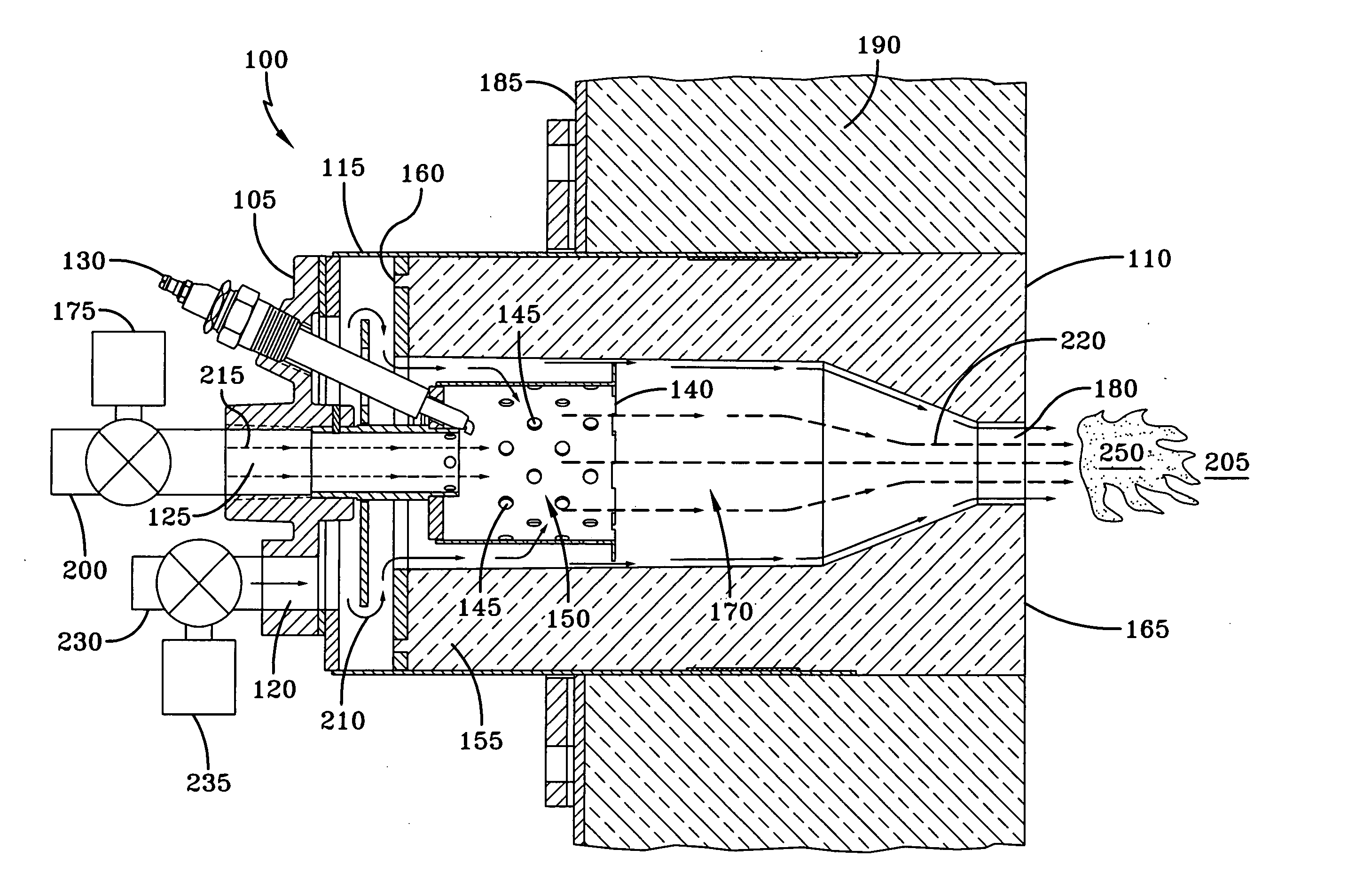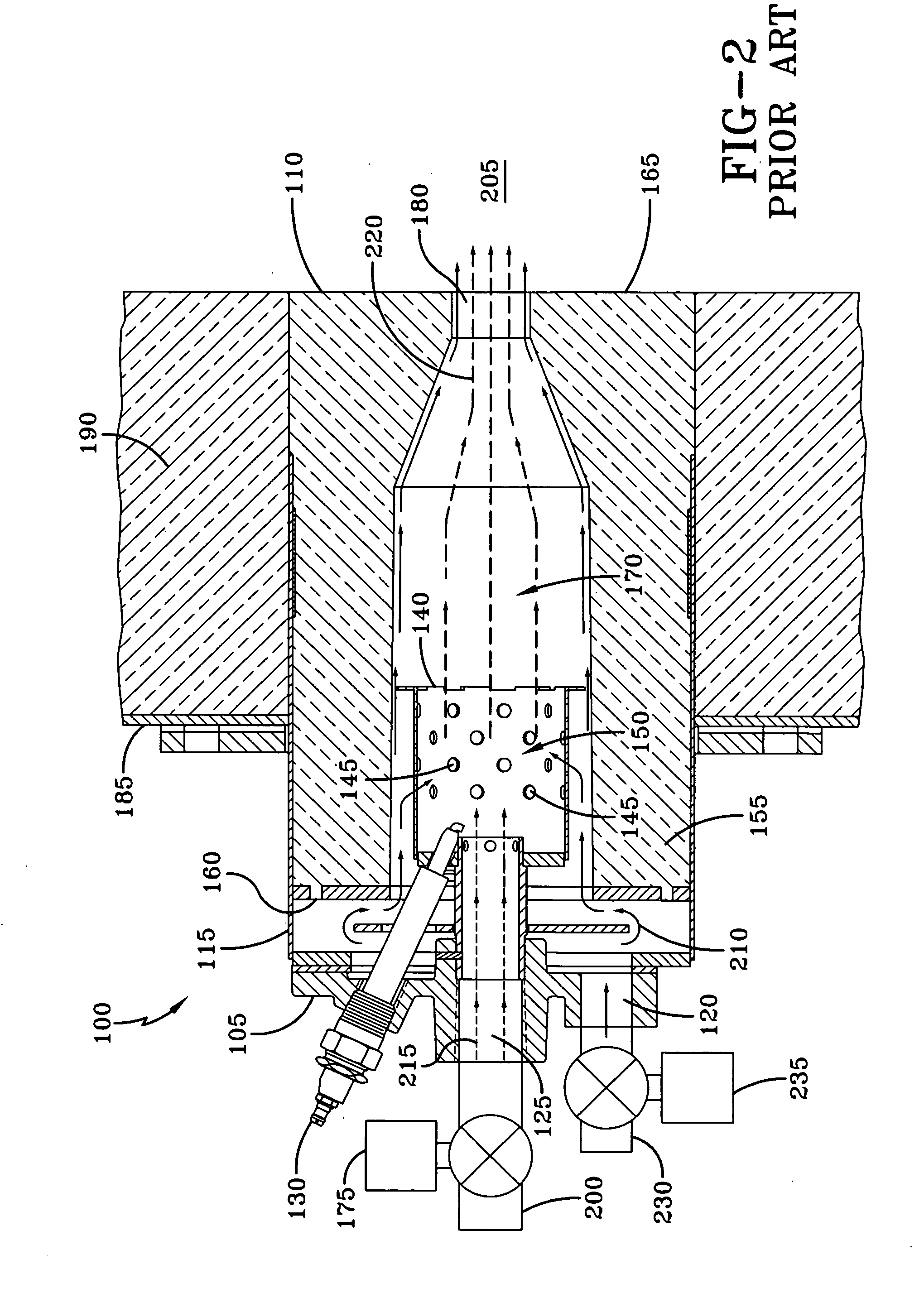Reduced NOx method of combustion
a nox method and low nitrogen oxide technology, applied in the field of low nitrogen oxide method of combustion, can solve the problems of substantial added capital expense of piping and controlling the recirculated flue gas, difficult to predict factors, and increased no/sub>x/sub>emissions, and achieve the effect of lowering nox emissions
- Summary
- Abstract
- Description
- Claims
- Application Information
AI Technical Summary
Benefits of technology
Problems solved by technology
Method used
Image
Examples
Embodiment Construction
[0020]FIG. 1 depicts an end view of an exemplary prior art high velocity burner 100 designed for firing on gaseous fuel, while FIG. 2 depicts a cross-sectional view of the prior art burner of FIG. 1 taken along line 2-2. The high-velocity burner 100 has an upstream end 105 and a downstream end 110. Additionally, the burner 100 has a main burner body 115, with a combustion air inlet passage 120 and a gaseous fuel inlet passage 125 located within the main burner body 115. A flame igniter 130 and flame detector (not shown) are disposed in the main burner body 115. The main burner body 115 also has a flame stabilizer 140 disposed within the body 115, the flame stabilizer 140 having a structural element that functions as a means of mixing fuel and air, such as, for example, apertures 145, and a flame stabilizer chamber 150 disposed within the flame stabilizer 140. Attached to the main burner body 115 is burner tile 155, having an upstream end 160 and a downstream end 165. The burner tile...
PUM
 Login to View More
Login to View More Abstract
Description
Claims
Application Information
 Login to View More
Login to View More - R&D
- Intellectual Property
- Life Sciences
- Materials
- Tech Scout
- Unparalleled Data Quality
- Higher Quality Content
- 60% Fewer Hallucinations
Browse by: Latest US Patents, China's latest patents, Technical Efficacy Thesaurus, Application Domain, Technology Topic, Popular Technical Reports.
© 2025 PatSnap. All rights reserved.Legal|Privacy policy|Modern Slavery Act Transparency Statement|Sitemap|About US| Contact US: help@patsnap.com



